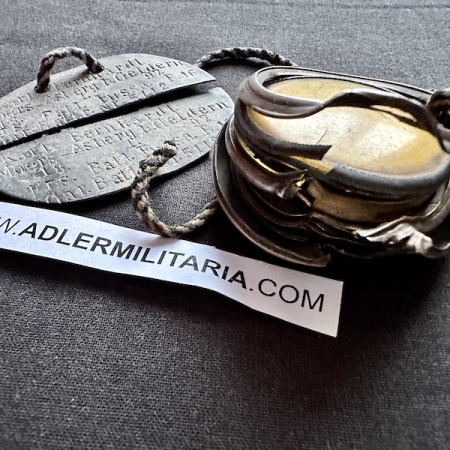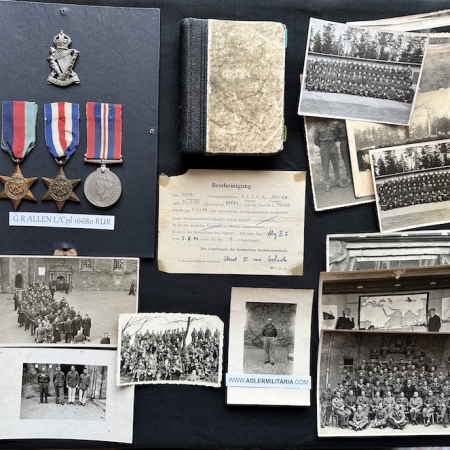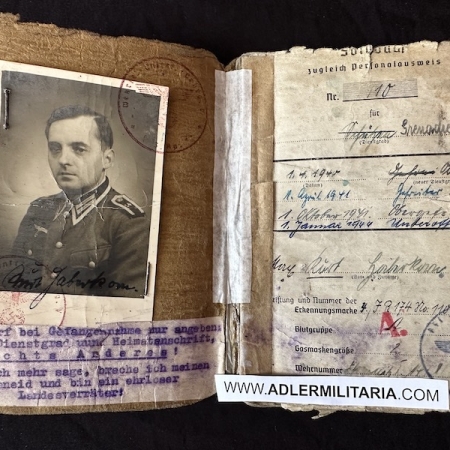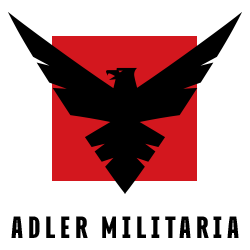- You cannot add another "Wehrmacht Soldbuch - Unteroffizier Haberkorn - Grenadier Regiment 1120 - 553 Volksgrenadier Division Ardennes 1944 - Wounded fighting US Troops 1945 (Reserved)" to your basket. View basket
Showing 28–34 of 34 resultsSorted by latest
-

WWII American Air Force Medal Bar – Brigader General Martin F Scanlon – Incredibly Rare Medal Set – Mega Career – Attache to UK during the Battle of Britain
$5,950.00Martin Francis Scanlon (11 August 1889 – 26 January 1980) was a general officer in the United States Air Force during World War II. After joining the United States Army in 1912, Scanlon served on the Mexican border, and participated in the United States occupation of Veracruz. He joined the Aviation Section, U.S. Signal Corps, and during World War I served with the American Expeditionary Force on the Western Front as a pilot with the 91st Aero Squadron. Between the wars he was an assistant military attaché in Rome and London, and was the military attaché in London from 1939 to 1941, during the first part of World War II. He was an Assistant Chief of the Air Staff from July 1941 to March 1942 at Headquarters, United States Army Air Forces, and then went to Australia as commanding general, Air Command No. 2, based at Townsville, Queensland. As such he was in charge of the air forces in New Guinea during the Kokoda Track campaign. In September 1942, he returned to the United States where he commanded the 38th Flying Training Wing and the 36th Flying Training Wing. He retired from the United States Air Force in 1948, and was director of export and vice president of Republic Aviation until 1957. Early life Martin Francis Scanlon was born in Scranton, Pennsylvania, on 11 August 1889. He attended the University of Pennsylvania from 1908 to 1909, and Cornell University from 1910 to 1911, before being commissioned in the United States Army as a second lieutenant in the Infantry on 24 April 1912.[1] He initially served with the 7th Infantry Regiment, but transferred to the 19th Infantry Regiment. This regiment patrolled the border with Mexico from Fort Crockett, Texas. He participated in the United States occupation of Veracruz from May to October 1914, when the 19th Infantry returned to Galveston, Texas.[2] World War I Scanlon was at San Antonio, Texas, from September 1915 to March 1916, at which point he was assigned to the Aviation Section, U.S. Signal Corps.[2] He was promoted to first lieutenant in the infantry on 1 July 1916, and in the Aviation Section on 28 October 1916,[1] when he received his wings as a junior aviator in San Diego, California.[2] Scanlon assumed command of the 2d Aero Squadron, which was then flying seaplanes from Fort Mills on Corregidor Island in the Philippines. He was promoted to captain on 15 May 1917. He returned to the United States in November 1917, and was posted to Kelly Field and then Fort Worth, Texas for additional training.[2] He went to England, where he trained with the Royal Flying Corps from February to August 1918, with the rank of major from 7 June 1918. He joined the American Expeditionary Force on the Western Front in France, and was a pilot with the 91st Aero Squadron until September 1918, when he assumed command of Colombey-les-Belles aerodrome during the Meuse-Argonne Offensive. He was then air service commander of V Corps until March 1919. He was a student officer at the Army Artillery School at Trier, and was at the headquarters of the air service of the Third United States Army at Coblenz during the Occupation of the Rhineland.[2] Between the wars On returning to the United States in July 1919, he became commanding officer of Bolling Field, DC.[2] He reverted to the rank of captain on 27 August 1919, but was transferred to the United States Army Air Service with the rank on major on 1 July 1920.[1] In 1923, he attended the Air Corps Engineering School at McCook Field, Ohio. On graduation in August 1923, he was assigned to the National Guard Bureau in Washington, D.C., from 1 December 1923 to 1 May 1924.[2] Scanlon was the assistant military attaché for air at the United States Embassy in Rome from May 1924 until August 1927, when he returned to the United States to attend the Air Corps Tactical School at Langley Field, Virginia, from which he graduated in 1928, and then the United States Army Command and General Staff College, from which he graduated in 1929. He was then assistant military attaché for air at the United States Embassy in London.[1] After a four-year tour, he returned to the United States to become commander of the 15th Observation Squadron in 1933. He was the base commander of Bolling Field from January 1935 to January 1936, when he went back to England as the military attaché for air.[2] He was promoted to the temporary rank of lieutenant colonel on 20 April 1935. This became substantive on 1 August 1935. On 26 August 1936, he was promoted to the temporary rank of colonel.[1] He was special assistant to the United States Ambassador to the United Kingdom from April to September 1939, when he became the military attaché. He was promoted to brigadier general in the wartime Army of the United States on 1 October 1940.[2] World War II Scanlon was assigned to Headquarters, United States Army Air Forces as an Assistant Chief of the Air Staff from July 1941 to March 1942. He was then sent to Australia as commanding general, Air Command No. 2, based at Townsville, Queensland.[1] As such he was in charge of the air forces in New Guinea during the Kokoda Track campaign. When Major General George Kenney took over as commander, Allied Forces in the South West Pacific Area from Lieutenant General George Brett in August 1942, he formed an unfavourable impression. He later recalled: I had known Mike ever since 1918 and liked him immensely, but he was miscast in this job. He had been an air attaché in Rome and London for the best part of the last ten years, with a tour as intelligence officer in Washington, I don’t know why they sent him up to New Guinea; he was not an operator and everyone from the kids on up knew it.[3] Kenney replaced Scanlon with Brigadier General Ennis Whitehead.[4] Scanlon returned to the United…
-
Sale!

WWII American 82nd Airborne Division – Researched D-Day Normandy – Sgt. Joseph J. Siegel Light Mortar Crewman – Dog Tags – Medals – Awards – Patches
$995.00Original price was: $995.00.$855.00Current price is: $855.00.Wonderful Original WWII U.S. Army 82nd Airborne Division D-Day Normandy Grouping of Sgt. Joseph J. Siegel Light Mortar Crewman. Sergeant Joseph Siegel (b. 15 Nov 1924 – d. 28 Dec 1984) of Buffalo, New York. This collection consists of Sergeant Siegel’s Personnel Identification Discs “Dog Tags” 1944-45 on the Chain – Medals, Awards, & Patches: Good Conduct Medal with Ribbon Bar and Enamel Lapel Bar Button American Campaign Medal with Ribbon Bar Europe Africa Middle East Campaign Medal with Ribbon Bar Showing Arrowhead and Four Campaign Stars (Ardennes, Central Europe, Normandy, & Rhineland) World War Two Victory with Ribbon Bar, Sharpshooter Marksmanship Qualification with Carbine Q Bar (both Pieces Hallmarked Sterling) Combat Infantryman Badge (Sterling), War-Time 82nd Airborne Division SSI Shoulder Patch with Tab Airborne Paratrooper Glider Infantry Overseas Garrison Cap Patch (Post-War Production) – Sgt. Siegel’s Original 1946 Discharge Certificate and ‘Enlisted Record and Report of Separation Honorable Discharge’ of the Same Period Chronicling His Service During World War Two Complete with Government Embossed Seal.
-

WWII German Photograph – General Leo Geyr von Schweppenburg – Normandy 1944 – Wearing British Dust Glasses – Super Rare Photo
$265.00An amazing photograph, displaying him with dust glasses taken from the British Army. Geyr von Schweppenburg (2 March 1886 – 27 January 1974) was a German general during World War II who is noted for his pioneering stance and expertise in the field of armoured warfare.[2][3] He commanded the 5th Panzer Army (formalised as Panzer Group West) during the Invasion of Normandy, and later served as Inspector General of Armoured Troops. After the war, he was involved in the development of the newly-built German Army (Bundeswehr). Freiherr von Geyr was born in 1886 in Potsdam into the Prussian military aristocracy and descended from a family that had produced two Prussian field marshalls.[4] He joined the German Army in 1904. In World War I, he fought on several fronts and rose to the rank of captain. After the war, he remained in the army, becoming an Oberst in 1932 and a Generalmajor in 1935. From 1933 to 1937, he was a military attaché to the United Kingdom, Belgium and the Netherlands and resided in London. Promoted to Generalleutnant upon his return from London, he took command of the 3rd Panzer (armoured) Division in 1937.[5] World War II From 1 September to 7 October 1939, Geyr commanded the 3rd Panzer Division during the invasion of Poland, where it was the most numerically powerful Panzer Division, with 391 tanks.[6] For a victory at Kulm, he was praised on the battlefield by Hitler, who had visited the division in recognition for its achievements in Poland.[7] He was promoted to General der Kavallerie of the XXIV Panzer Corps on 15 February 1940. In 1940, he commanded the XXIV Panzer Corps in the Invasion of France. In 1941, in the invasion of the Soviet Union, Geyr’s XXIV Panzer Corps was part of General Heinz Guderian’s Second Panzer Army, and consisted of all of Guderian’s major tank units.[8] On 9 July 1941, he was awarded the Knight’s Cross of the Iron Cross as General der Panzertruppe.[9] By early November 1941, Geyr’s Panzer Corps commanded the 3rd, 4th, and 17th Panzer Divisions, the panzer regiment from the 18th Panzer Division, as well as the Infantry Regiment Großdeutschland, and spearheaded the advance of Army Group Centre during the Battle of Moscow.[8] From 21 July 1942, taking over from the court-martialed Georg Stumme,[10] to 30 September 1942, he was commanding General of the XXXX Panzer Corps, taking part in the fighting in the Caucasus. Geyr was relieved in a command cadre shakeup at the end of September 1942.[10] In the spring of 1943, Field Marshal Gerd von Rundstedt ordered Geyr to prepare a force of 10 Panzer and motorised infantry divisions. On 19 November 1943, Geyr’s command was formalised as Panzer Group West, which had responsibility for the training and formation of all armoured units in the west. The group of armoured divisions near Paris constituted the Germans’ main force of tanks in France. In the event of an Allied landing on the northern French coast, Panzer Group West was expected to counterattack northward and to halt the invasion force.[11] The Allied invasion of Normandy took place on 6 June 1944. By 8 June, Geyr had moved three panzer divisions northward against British and Canadian forces advancing on the town of Caen. On, Royal Air Force aircraft attacked his newly-established headquarters at La Caine in Normandy. Geyr was wounded and many of his staff officers were killed, which forced the cancellation of the counterattack.[12] Geyr’s reinforced tank units managed to prevent the British advance for another month, but he was nevertheless relieved of his command on 2 July after seconding Rundstedt’s request for Hitler to authorize a strategic withdrawal from Caen.[13][14][15] He was succeeded by Heinrich Eberbach on 4 July and served as Inspector General of Armoured Troops until the closing phase of the war
-
Sale!

WWII German Knights Cross Holder – Karl-Conrad Mecke – Raid on St Nazaire – 22 Marine Flak Regiment
$225.00Original price was: $225.00.$165.00Current price is: $165.00.An extremely desirable and rare postcard size photograph of Mecke with his Knights Cross, which he won during the British raid on St Nazaire, also known as the Greatest Raid of All. Knights Cross action: Awarded for his role in combating the British raid on St. Nazaire, Operation Chariot, on 28.03.1942. Due to the unusual behaviour of the British bombers it was Mecke who recognized the potential of a landing and put his troops on alert. His guns later opened fire on the British convoy despite their disguise as German vessels and also participated in the fight against the British landing forces.
-

WW1 German Solders ID Tag and “Battle-damaged” Pocket Watch – Karl Bernhardt – Ers.Batl Fuss. Gar. Batt Nr 5112 –
$695.00Incredible little group. The battle damage likely deflected shrapnel or a bullet. The German Dog Tag is marked with: Karl Bernhardt Born: 12.1.1897 Unit: Ersatz Batl Fuss Gar Batt Nr 5112 Research shows that Karl Bernhardt survived the war and died in his hometown of Moers in 1966 of ill health. Watch: Incased old watch, was hit and opened, his name and date of birth matching the tag are engraved inside the watch. When we took this apart to show you the internal system of the watch it began to move. We have a video of it and will be given to the next owner…
-

-

Wehrmacht Soldbuch – Unteroffizier Haberkorn – Grenadier Regiment 1120 – 553 Volksgrenadier Division Ardennes 1944 – Wounded fighting US Troops 1945 (Reserved)
$345.00Wehrmacht Soldbuch for NCO Kurt Haberkorn. Soldbuch opened in December of 1939 with Infanterie Regiment 174. In 1941 – Etra Südost / Wehrmachttransportleitung Südost On 01.11.1940 – set up in Vienna, the use of which is to be considered in connection with the dispatch of the German army mission to Romania, which began in October, and the increasing involvement of the Balkans in German military plans. It was initially responsible for the transport command in Ostmark, Bohemia and Moravia, the transport officer in Pressburg and the German border command in Regensburg. Location always Vienna Late 1944 / 1945 – Grenadier Regiment 1120 (553 Volksgrenadier Division) – Fought against: US ARMY – 79 US Infantry Division & 10 US Armoured Division near Oehringen/Schwaebish Hall 1945 553. Volksgrenadier division was created on 9 October 1944 by the renaming of the 553. Grenadier division in Lorraine. The 553. Grenadier division was originally formed as a Sperr division (blocking division) in Münsingen. The unit was composed of men from Württemberg. In September 1944, the 553rd was rushed to the Lorraine region of the western front and thrown into battle against the Allied troops advancing on the city of Nancy. During September 1120. Grenadier regiment of the division defended Forêt de Champenoux to cover the withdrawal of the rest of the division. The regiment had entrenched thoroughly, building a line of log-covered dugouts and foxholes ten or fifteen yards inside the forest. Within the shelter of the woods a few assault guns backed up the infantry and covered still more entrenchments. When the Americans attacked with tanks and infantry on 20 September, they were repulsed. Repeated attempts were made to push the 1120th Regiment out of their positions during the day, and the following day, but all were driven back. The Americans tried a prolonged artillery barrage to demolished the entrenchments, but even this was unable to dislodge the defenders. On 22 September, the Americans tried a combined attack with the 80th and 35th Infantry Divisions, supported by one combat command of the 6th Armoured Division and the Volksgrenadiers were finally pushed out of the forest. With the Americans now threatening both his flanks, the 553. GD’s commander, Oberst Erich Loehr pulled his division back. The division was pulled out of the line in October. The whole 553. Grenadier division had been worn down after a month’s hard fighting and had to be reinforced. The reinforcements it integrated were number of fortress and independent battalions in the area of Army Group D. Even with the addition of these groups, one regiment (the 1121st) was dissolved along with the 2nd Battalion of 1120. Grenadier regiment. While the US Third Army was advancing from Metz, the US Seventh Army was preparing to clear the Saverne Gap. In mid-November, the American 44th Infantry and the French 2nd Armoured Divisions started an advance aimed at taking Saarbourg. Among the defending units was the newly renamed 553. Volksgrenadier division. Another hard defensive battle began for the Volksgrenadiers. The Allied assaults ground down the German units until they were only shadows of their normal organisations. After Saarbourg fell to the US 44th Infantry Division on 21 November, the remnants of 553. VGD were pulled out and transferred to southern Alsace. During Operation Nordwind the division the division attacked alongside 10. SS-Panzerdivision from Gambsheim towards Haguenau. At the end of January, the High Command decided to pull the 553. VGD out of the line entirely and rebuild it once again. The division was re-established on 31 January 1945 in Pforzheim. The division was deployed in the 19. Armee sector on 20 March. The division surrendered to the Americans shortly thereafter in Württemberg. Awards: Wounds badge in Black , he was wounded twice and received no Silver badge due to the war ending. Soldbuch comments. Very nice piece of paper added to the front page, detailing that he is if the captured only allowed to say his name, rank and home address, anything else is dishonourable and guilty of treason against Germany. A rare late war unit, fighting in desirable and sought after battles. 10th Armoured – US Army Documentary about the fighting in Germany, also where Haberkorn was wounded. An interesting documentary covering the creating on the Volks Grenadier Divisions


























